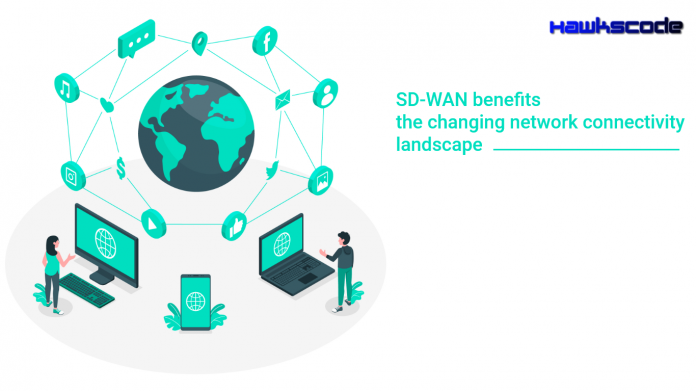SD-WAN benefits the changing network connectivity landscape
SD-WAN benefits the changing network connectivity landscape. In the latest networking advance, SD-WAN benefits the evolving network connectivity landscape by allowing customers to use less expensive internet links and keep MPLS for important traffic.
The evolution of network connectivity over the years has been progressive, evolving from X.25, frame relay and asynchronous transfer mode to internet VPN and MPLS virtual private routed networks. Now, a huge amount of buzz surrounds software-defined WAN, and benefits are changing the network connectivity landscape. SD-WAN benefits the changing network connectivity landscape.

Important Announcement – EasyShiksha has now started Online Internship Program “Ab India Sikhega Ghar Se”

The original thinking behind software-defined networking — from which SD-WAN technology emerged — was about the ability to support agnostic connectivity, in which a centralized management server sends instructions to a hardware edge device.
The reality is somewhat different in terms of connectivity. Most service providers market SD-WAN as a type of internet-based virtual private network (VPN). With the growing demand for cost savings, combined with flexibility, reporting and access to public cloud services, the adoption of SD-WAN over internet connections is growing significantly. SD-WAN benefits the changing network connectivity landscape.
Top Software Engineering Courses
With this in mind, the connectivity landscape is again changing by making the internet a trusted delivery mechanism for secure data transmission. Where the internet was once a best-effort network, IT is beginning to view internet providers’ public networks as scalable, traffic-engineered, low-cost delivery mechanisms for encrypted tunneling.
The future for services like MPLS, then, depends on the requirements for security and end-to-end traffic performance guarantees. With so many providers pushing SD-WAN as internet-based VPN services, MPLS will see a decline in usage, as IT teams view the platform as restrictive and expensive. The private nature of MPLS connections means an organization can access only certain cloud services, depending on whether it has connections to private cloud services in its data center or office locations.
But MPLS is the technology of choice when enterprises require end-to-end traffic performance and privacy. SD-WAN benefits the changing network connectivity landscape.
Empower your team. Lead the industry
Get a subscription to a library of online courses and digital learning tools for your organization with EasyShiksha
Request NowThe global connectivity market is more of a challenge than national deployments. Providers push SD-WAN benefits like cost savings by procuring local broadband internet circuits, but organizations should pay careful attention to latency, jitter and support issues. Nationally, the use of multiple providers doesn’t affect latency as much, because traffic traverses fewer hops across networks. In comparison, global organizations may experience more latency and jitter, because traffic can traverse multiple providers’ networks worldwide.
I hope you like this blog, SD-WAN benefits the changing network connectivity landscape. To learn more visit HawksCode and Easyshiksha.
ALSO READ: international-day-yoga-include-almonds-diet-plan
Get Course: How-To-Start-a-Profitable-Consulting-Business








































































